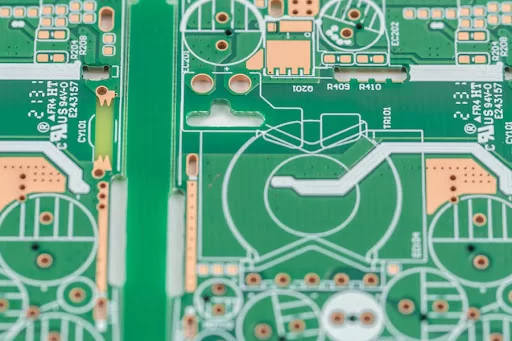The Oven PCB board plays a vital role, particularly in temperature-controlled equipment like ovens in modern electronic devices. The oven printed circuit boardis one of the core components of an oven, responsible not only for controlling the temperature but also for ensuring the device operates stably in high-temperature environments. Due to the unique internal environment of ovens, the design and manufacturing of the PCB board must take into account requirements for high-temperature resistance and stability.
The Oven PCB board is a crucial part of the oven's interior, with its primary task being to ensure the accuracy and reliability of the temperature control system. During the heating process in the oven, the temperature control system must maintain precise temperatures to ensure even cooking of food. This requires the PCB board not only to have excellent electrical performance but also to operate for extended periods in high-temperature environments without failure.The design and manufacturing of the oven printed circuit boardinvolve the selection of various technologies and materials. First, the material of the PCB board must have high-temperature stability and durability. Common materials include FR-4, ceramic substrates, and others, which can maintain stable electrical performance at high temperatures. Additionally, the design of the PCB board must consider thermal management to ensure that heat can be effectively dissipated in high-temperature working environments, preventing component overheating and subsequent failure.

Oven PCB board
In the manufacturing process of ovens, quality control of the oven printed circuit boardis of utmost importance.Manufacturers must ensure that each PCB board undergoes rigorous testing to meet the usage requirements in high-temperature environments.This includes electrical performance testing,thermal stability testing,and reliability testing for long-term operation. Only PCB boards that have passed stringent testing can be guaranteed to perform without failure in actual use.
The Oven PCB board operates in a highly demanding environment,where it must withstand long-term high-temperature operation.To meet this requirement, PCB board designers often employ multilayer board designs to enhance the electrical performance and stability of the PCB board. Multilayer designs can effectively reduce electromagnetic interference and improve signal transmission speed and stability, ensuring that the oven's temperature control system operates precisely and stably.In the production process of oven PCB boards, manufacturers must consider the needs of different models and specifications of ovens. This requires a certain level of flexibility in the design of the PCB board to adapt to different working environments and usage requirements. To improve production efficiency, manufacturers typically use automated production equipment, which not only increases production speed but also ensures consistency in the quality of each PCB board.
In modern ovens, the role of the oven printed circuit boardis not limited to temperature control. With technological advancements, more and more intelligent functions are being integrated into ovens, such as remote control and automatic cooking programs. The realization of these functions relies on the design and manufacturing of the PCB board. Therefore, future oven PCB boards will need to possess not only higher electrical performance but also greater intelligence and integration capabilities.
The Oven PCB board will face more challenges and opportunities in future development. As the concept of smart homes becomes more popular, the trend of intelligent appliances like ovens is becoming increasingly apparent. This will drive PCB board designers to continuously innovate, developing more efficient and intelligent PCB boards to meet the demands of future markets. At the same time, with the deepening of environmental protection and energy-saving concepts, the design of PCB boards will also place greater emphasis on the use of environmentally friendly materials and the improvement of energy efficiency.
PCB boards absorb a lot of moisture during the production process. If they are not baked, the moisture inside them will evaporate in the SMT oven, resulting in blistering on the PCB surface, SMT falling off and other adverse consequences. In addition, PCB affects subsequent processes and may even cause problems with the quality of the entire product.The baking process of PCB boards is mainly divided into two stages: drying and preheating. Drying is to put the board into the oven and evaporate the moisture inside the board through a certain temperature and time; preheating is to improve the adhesion and avoid other problems during the SMT process.
In conclusion, the Oven PCB board is an indispensable and important part of temperature-controlled devices such as ovens. It is responsible not only for temperature control but also for ensuring the stable operation of the device in high-temperature environments.With the continuous advancement of technology, the oven printed circuit boardwill play an even more important role in providing users with more intelligent and stable usage experiences.